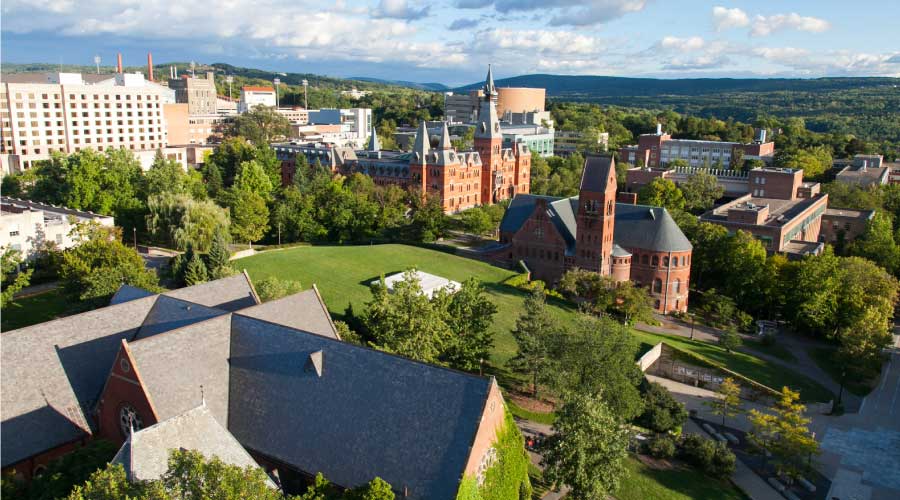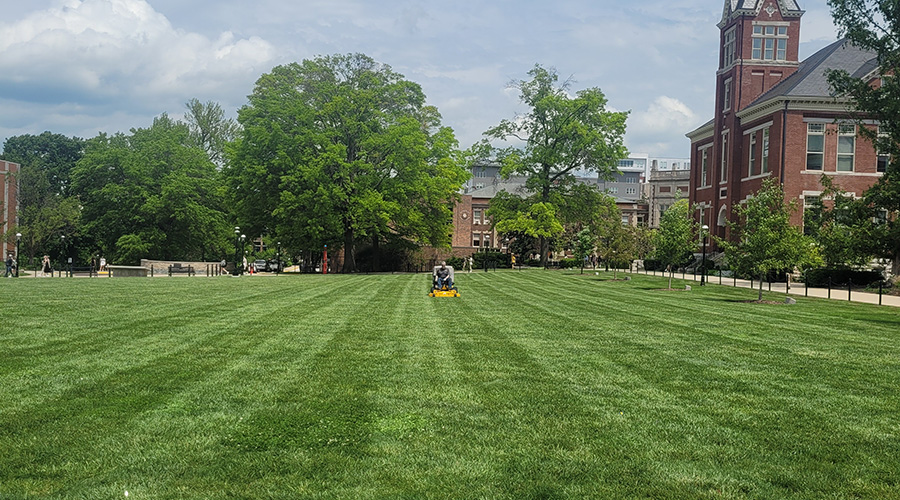First and Last Impression: Aesthetically Pleasing Landscapes
Grounds managers continually seek ways to produce versatile spaces that can adapt to the various demands for the audiences they serve.
Well-maintained landscapes provide environmental, social and economic benefits to communities. By decreasing urban heat island effect, reducing noise, improving air and water quality and providing safe outdoor spaces for community engagement, investing in high-quality grounds provides immeasurable returns.
With increased demand for aesthetically pleasing green spaces that are also safe and sustainable, grounds managers have become creative in their efforts to produce and maintain these landscapes, utilizing transparent and proactive communication with organization stakeholders. The Professional Grounds Management Society (PGMS) highlights two member-organization approaches, including a more than 20-year journey that one campus has undergone in its commitment to producing a safe, sustainable and aesthetically pleasing landscape.
Following a strategic analysis of how American University (AU) could serve as a good steward to its community through a campus-wide commitment to sustainability, the campus underwent a transformation to become an accredited Arboretum and Gardens in 2003. AU’s commitment to sustainability continued when it became the first carbon neutral campus in the country in 2018. The AU grounds department emphasizes thoughtful design solutions with attentive sustainable practices, such as electric vehicles and equipment, rain gardens, bio-retention, rain barrels, cisterns, green roofs and permeable pavers. The results have been impressive, with student applications increasing 400 percent, and donations to the arboretum have become a popular way for alumni to give back.
Cornell University has also expanded its sustainability efforts, including recently transitioning 35 hard-to-mow acres to a natural meadow landscape. Benefits include reduced carbon dioxide emissions, creation of a pollinator habitat, increased biodiversity, enhanced storm water control and reduced safety concerns from mowing a sloped area. Additionally, the grounds department will be monitoring the site to determine if a deeper root system will lead to sequestering more carbon in the soil. Informational signage, such as “Tall Grass, Small Gas,” conveys the rationale of transitioning the space to a meadow, emphasizing that natural landscapes reduce mowing and chemical use, all part of Cornell’s goal to reach carbon neutrality by 2035.
Transparency and proactive foresight to meet evolving stakeholder demands are important when designing and maintaining green spaces. Grounds managers continually seek ways to produce versatile spaces that can adapt to the various demands for the audiences they serve while at the same time being sustainable and respectful of the environment.
This article was provided by the Professional Grounds Management Society (PGMS). PGMS works with grounds managers and service providers in the industry.
Related Topics:












